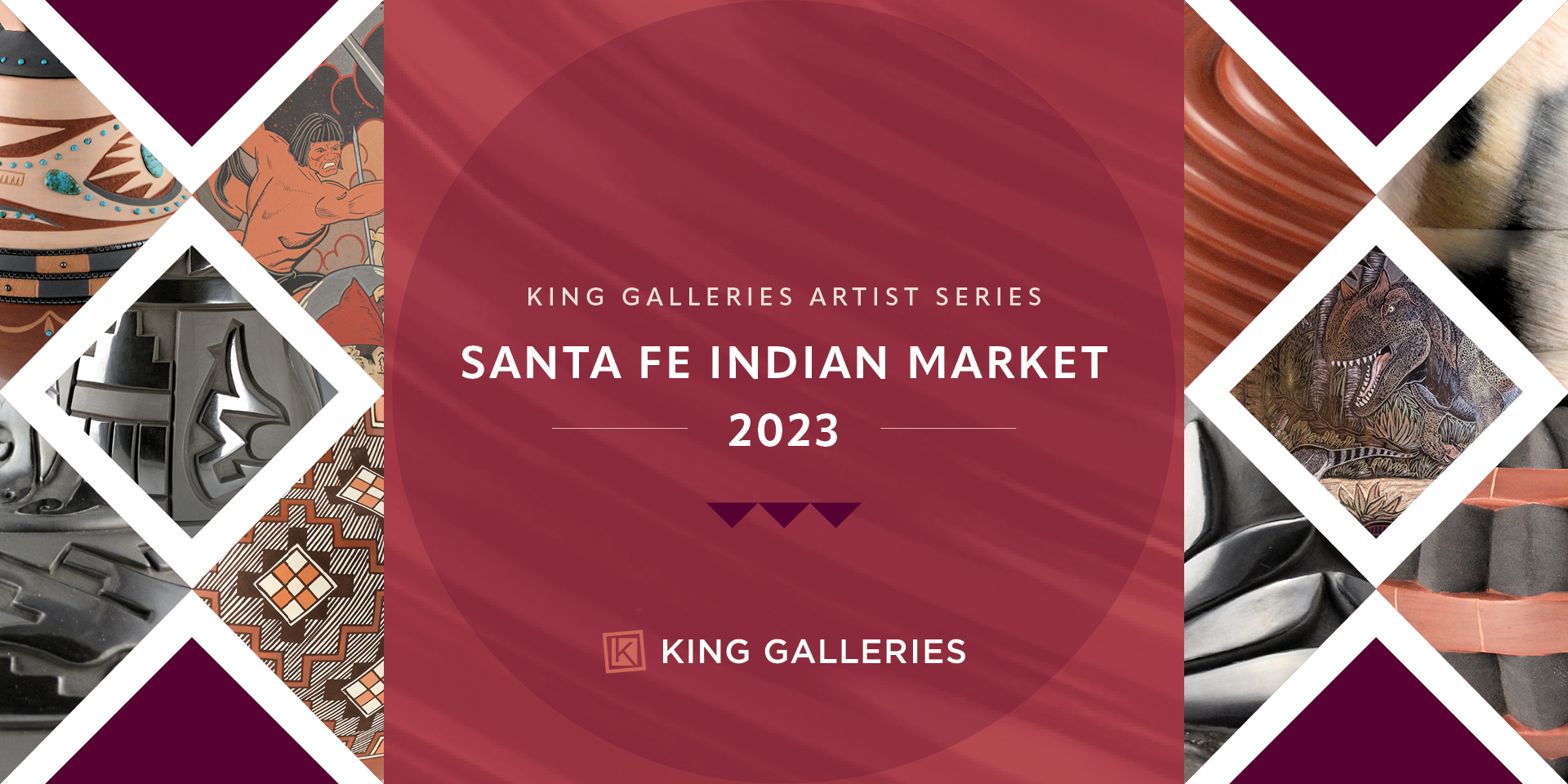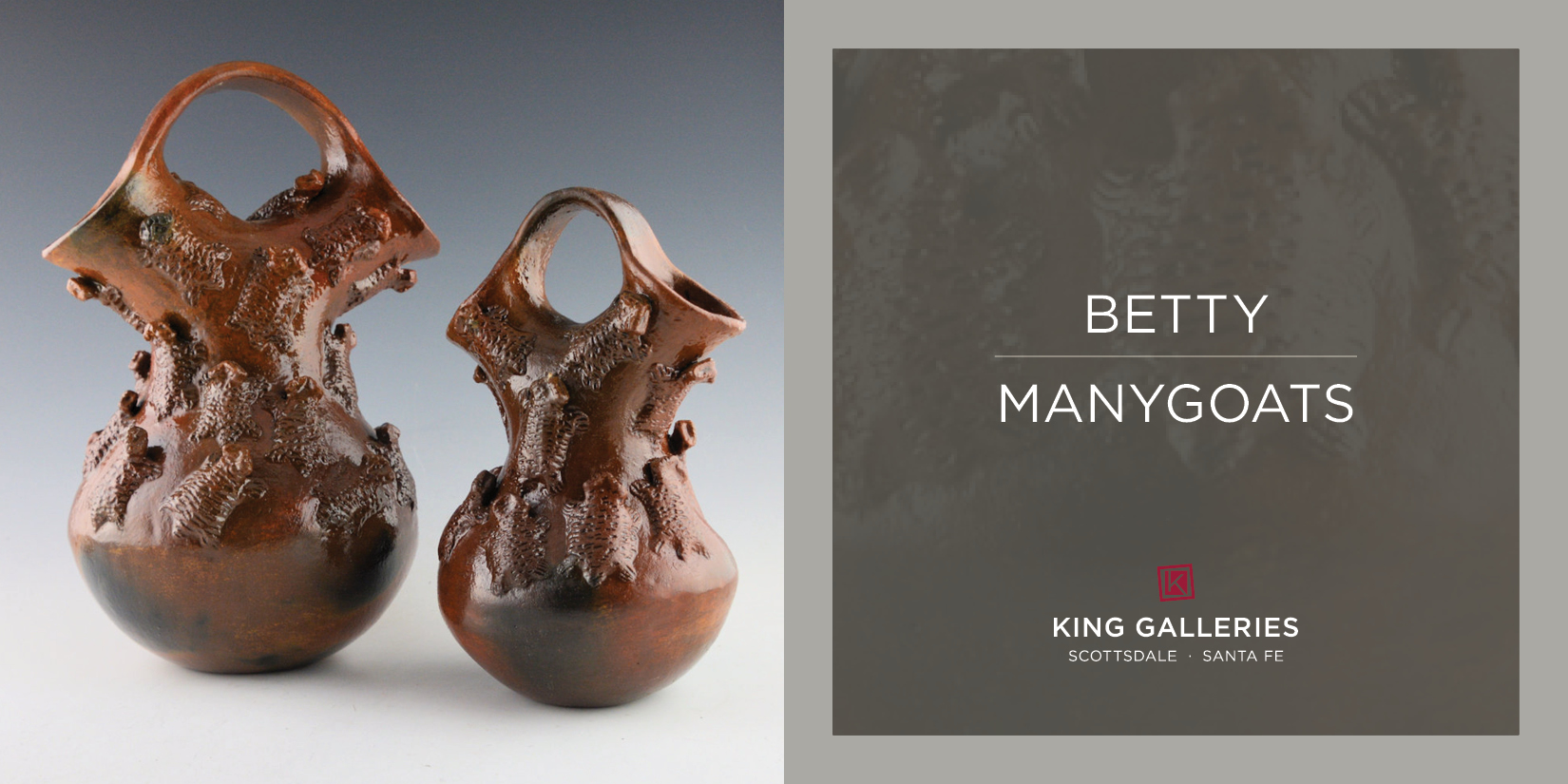Artist Media Series
Living Artists
Historic
$ 175.00
Betty Manygoats is known for distinctive Dine (Navajo) pottery with its “folk art” feel to the designs. She is famous for her pottery with horned lizards as the design. This is a charming folk art piece. It is a clay hogan, a traditional Navajo style house and ceremonial structure. There round-roofed [female] hogan, which may be circular, hexagonal, or octagonal in shape. The piece was traditionally fired and then covered in pinon pitch in the manner of traditional Navajo pottery. The piece is signed on the bottom in the clay, “BM.” Betty has won numerous awards for her pottery over the years. It can also be found in museums throughout the Southwest.
Out of stock
Betty Manygoats is known for distinctive Dine (Navajo) pottery with its “folk art” feel to the designs. She is famous for her pottery with horned lizards as the design. This is a charming folk art piece. It is a clay skillet with an egg, sausage, and bacon. It was traditionally fired then painted. After it was painted the piece was covered in pinon pitch in the manner of traditional Navajo pottery. The piece is signed on the bottom in the clay, “BM.” Betty has won numerous awards for her pottery over the years. It can also be found in museums throughout the Southwest.
Why the horned lizard? “In the Diné culture Horned Toad is addressed as “grandpa” (shicheii). It possesses spiritual power. When you see one, pick it up and rub it on your chest and say, “I will be in good health and harmony.” If you have corn pollen sprinkle it as an offering and then let the horned lizard loose where you found it. You will then have good health and harmony. It is believed that the horned toad is dressed with an armored shield, which is called arrowhead. The spiky horns on the body represent the arrowheads. This protects the horned toad from predators. It was placed on earth with songs and prayers so that in the future the Diné would utilize it. The Diné still know and use its sacred prayers and songs for protection.” Traditional Dine Teachings on Wildlife (1998)
Artist Media Series
Living Artists

